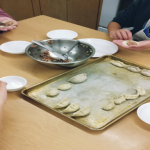Home Economics draws knowledge from many disciplines and uses the experiences and needs of students to make learning meaningful in both personal and family context. It focuses on helping students develop practical abilities related to foods, textiles and care-giving. It also fosters the critical thinking and problem solving skills needed to manage individual and family resources.
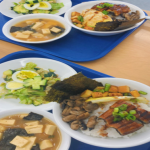 In Home Economics courses, students will have opportunities to:
In Home Economics courses, students will have opportunities to:
- practice and apply attitudes and skills that promote a healthy lifestyle
- promote healthy food choices that are quick, appealing, and economical by using Canada’s Food Guide as a resource
- use creativity in meal planning and presentation as well as clothing construction and wardrobe planning
- develop efficient management and consumer skills
- acquire the knowledge, skills and understanding of the principles necessary to provide food, clothing and shelter
- develop the abilities and attitudes needed to deal effectively with social, economic and technological changes
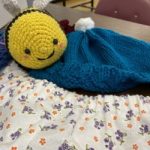
- recognize the needs and customs of various cultures in order to achieve effective relationships
- foster positive relationships by working cooperatively to achieve common goals
- acquire a broad base of knowledge for use in future career training or personal activities
- develop a variety of skills and interests in leisure time
Grade 8
All grade 8 students at Burnaby North take ADST 8, which includes one term each of Home Economics, Business Education, and Technology Education, allowing them to learn a wide range of practical skills.
Home Economics 8 (required component of ADST 8)
- Students are introduced to basic Home Economics skills. In the Foods
 portion of the course, students will learn basic cooking techniques like how to measure ingredients, how to follow a recipe, and how to use basic kitchen equipment and utensils while making a variety of quick dishes. In the Textiles portion of the course, students will learn basic sewing techniques like how to cut and piece patterns, how to sew by hand, and how to use a sewing machine while making some simple garments.
portion of the course, students will learn basic cooking techniques like how to measure ingredients, how to follow a recipe, and how to use basic kitchen equipment and utensils while making a variety of quick dishes. In the Textiles portion of the course, students will learn basic sewing techniques like how to cut and piece patterns, how to sew by hand, and how to use a sewing machine while making some simple garments.
Grades 9-12
Food Studies
NOTE: Beginning this year, students taking Food Studies will select their desired course in “levels” based on their previous experience in Foods. If you are unsure which level is most appropriate for you, please see Ms. Dias in room 221.
Food Studies Level 1 (gr 9-10)
 This introductory course is designed for students in grade 9-10 who have completed Applied Skills 8 or for those who have not previously taken a Foods course in high school. Students will learn about basic food safety and preparation techniques in baking and cooking. Working in a kitchen unit, students will develop communication and collaboration skills while completing various activities. Students will begin to examine the connections between food and the world they live in. Units of study may include: Baking, breakfast, lunch, dinner, Canada’s food guide, and meal planning.
This introductory course is designed for students in grade 9-10 who have completed Applied Skills 8 or for those who have not previously taken a Foods course in high school. Students will learn about basic food safety and preparation techniques in baking and cooking. Working in a kitchen unit, students will develop communication and collaboration skills while completing various activities. Students will begin to examine the connections between food and the world they live in. Units of study may include: Baking, breakfast, lunch, dinner, Canada’s food guide, and meal planning.
Foods Studies Level 2 (gr 10-12)
This course is intended for students in grade 10-12 who have taken Food Studies Level 1 or those who have practical experience in the food industry. Students will continue to develop their food safety and preparation skills by exploring a variety of recipes and cultural cuisines. Working in groups, students will use the design process to plan meals while considering social and cultural restraints. In addition, students will examine food systems and how different factors affect the food that we eat here and around the world. Units of study may include: Indigenous food, International Cuisine, meal design and health & diet.
Food Studies Level 3 (gr 11-12)
This course is intended for students in grade 11-12 who have taken Food Studies Level 2 or for those who have practical experience in the food industry. Students will participate in a series of complex meal and recipe design opportunities. Mainly working in pairs, students will often get choice in the recipes and activities they complete while the teacher provides support and guidance. Global food issues such as food security, sustainability, specialty diets, food marketing, cultural appropriation and food justice are possible themes for the course.
Culinary Arts 11 – Baking 11
- Emphasis on developing advanced baking skills for the home baker & on a professional level
- Learn how to make basic quickbreads (cookies, muffins, biscuits), standard pastries, cheesecake, doughnuts, artisan breads custards and tortes
- Learn how to build an elaborate gingerbread structure, garnishing and plating for that extra appeal.
Culinary Arts 12 – Baking 12
- Emphasis on developing advanced baking skills for the home baker & on a professional level
- Learn how to make yeast breads, savory pastries, French pastries, artisan breads and tortes
- Learn the arts of cake decorating (butter cream and fondant), garnishing and plating
TEXTILES
TEXTILE ARTS: May include quilting, knitting, crocheting, spinning, weaving, dyeing fabrics, or other textiles related art – depending on interest and distanced learning.
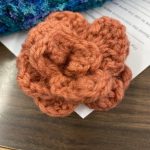 Textiles 9
Textiles 9
Builds on basic sewing skills developed in Home Economics 8.
- Students will learn how to use home sewing machines as well as develop weaving, knitting and/or crocheting skills and the basics of fabric care.
- Students will work with woven fabrics. Projects may include the following: a facemask, a pair of shorts or pyjama bottoms (with or without pocket), small plushies…
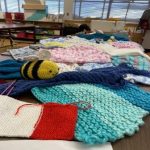 Textiles 10
Textiles 10
Further development of sewing skills and techniques for fitting and pattern adjustment.
- Students will learn about fiber traits as well as the basics of garment production.
- Students may work with wovens, stretch wovens, knits and/or slippery fabrics. Projects may include more challenging Textiles 9 projects and/or the following: a fitted skirt or fitted pair of pants, a housecoat, a hoodie, and/or a dress or shirt.
 Textiles 11
Textiles 11
Introduction to simple textile design, and more complex textile machinery.
- Students will explore environmental, historical and social impacts on fashion / textile design and fashion marketing.
- Projects may include more challenging Textiles 10 projects and/or the following: a bathing suit, a lined skirt or pair of pants, a blouse or yoked shirt and/or a small quilt.
Textiles 12
Introduction to complex textile design and tailoring.
- Students will continue to research environmental, historical and social impacts on fashion / textile design and fashion marketing.
- Students will advance skills such as tailoring and learn to make challenging projects including a lined jacket, a full-sized quilt and/or a formal gown.
*All projects will be chosen by the student in consultation with the teacher based on skills and abilities, and degree of difficulty.
Fashion Industry 12 (NEW FOR 2022!)
An introduction to the fashion industry.
- Students will continue to research environmental, historical and social impacts on fashion / textile design and fashion marketing.
- Students will advance skills such as tailoring and learn to make challenging projects including a lined jacket, a full-sized quilt and/or a formal gown.
Students will make artistic and technical drawings, conduct fibre and care research and cost analysis, and assemble the mini-line to present to their peers.
- Sewing experience and/or Textiles 11 are highly recommended for this course.
